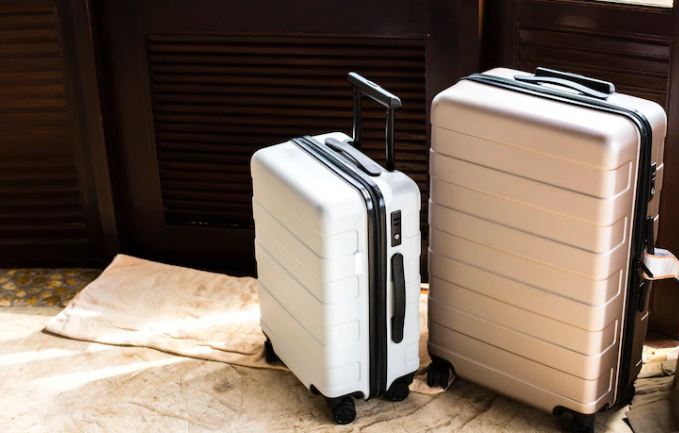As an Amazon Associate, I earn a small commission from qualifying purchases. Learn more about this.
Layovers can be a mixed bag.
While some prefer the time to explore the airport or even the city beyond, others dread the idea of hauling their luggage everywhere they go. The solution?
Airport lockers, at least, to avoid luggage theft.
In this article, we explore their availability, cost, and benefits.
Do Airports have Lockers for Layovers?
The availability of lockers at airports for layovers varies greatly depending on the airport you’re at and its location. It’s a yes and no thing, depending on the airport.
Many major international airports do offer locker services where you can store your luggage for a few hours or even days.
A few popular examples are below:
- Tokyo International Airport (HND) in Tokyo, Japan
- John F. Kennedy International Airport (JFK) in New York, United States
- Hartsfield-Jackson International Airport (ATL) in Atlanta, United States
- Fort Lauderdale-Hollywood International Airport (FLL) in Fort Lauderdale, United States
- Dubai International Airport (DXB) in Dubai, United Arab Emirates
But there are airports where this service might not be available.
A number of them.
Hence, the first step you want to do (if lockers for layovers are important for you) is to confirm with the security officers about their availability.
And there are several factors that influence this.
One of the major ones is security concerns.
After the events of 9/11, many airports in the United States removed or restricted access to their lockers. In fact, in some U.S. airports, locker services are handled by outside companies rather than the airport itself.
That’s why it’s essential to check the specific policies of the airport you’re traveling through.
Some airports might require you to go through a security screening before you can access the locker area.
Others might have limitations on the size of the items you can store, while some might not offer the service at all.
In some cases, you can find alternative luggage storage solutions at airports, such as Bounce, which offers storage lockers near Fort Lauderdale Airport (FLL)
Cost is another thing to consider.
Most airports that offer locker services charge a fee, which can vary based on the size of the locker and the duration of use.
It’s a good idea to check the airport’s website or call their information line to get details on costs, locker sizes, and any restrictions they might have.
Why did Airports in the US Stop putting lockers after the 9/11?
The tragic events of September 11, 2001, irrevocably changed many facets of our daily lives, particularly when it comes to air travel.
One of the more visible changes at airports was the removal or restriction of locker services.
To understand this move, we need to recognize the mindset of that time.
After the attacks, there was an immediate and understandable emphasis on tightening security at every possible juncture.
The main goal?
To prevent any similar act of terrorism. Airports across the U.S. went into an overhaul mode, revisiting and revamping their security protocols.
Lockers posed a specific concern.
The worry was that they could be used to store harmful or explosive materials without easy traceability to the individual responsible.
An unattended bag or package is always a security concern, but when it’s locked away without oversight, the perceived risk intensifies.
Before 9/11, it was convenient to find lockers in many U.S. airports.
Travelers could store their luggage, gifts, or any other items securely as they waited for their flights or during layovers.
However, in the post-9/11 environment, anything that could potentially be used to conceal a threat became a liability.
But weren’t there surveillance cameras?
While airports did and still do use CCTV systems, the idea is to minimize risk at its root rather than react after an incident.
If a malicious act were to occur using an airport locker, the response time could be critical. By removing the lockers, airports aimed to eliminate this potential risk.
It’s also worth noting that as the U.S. started revamping its airport security procedures, other countries took note and followed suit, either by increasing the scrutiny around their existing lockers or by removing them altogether.
Today, while lockers are not as prevalent in U.S. airports, the focus has shifted to providing secure luggage storage services, often operated by third-party companies, where bags can be stored with staff oversight.
What to do if an airport doesn’t have layovers?
1. Familiarize Yourself with the Airport Layout:
Before you even board your first flight, take a moment to look up the airport’s layout. Many airports have their terminal maps available online.
This way, you can get a general idea of where you’ll be landing and where your next gate is. If it’s a large international hub, some terminals might be a train ride or a long walk away. Being aware reduces last-minute scrambling and stress.
2. Luggage Storage Services:

It’s important to keep in mind that just because an airport doesn’t have self-service lockers doesn’t mean they lack luggage storage options.
Many airports have dedicated luggage storage counters. These are manned services where you hand over your baggage, get a receipt, and collect your luggage once you’re ready to move on.
Sure, it might be a tad pricier than traditional lockers, but it’s a safe and convenient option.
3. Keep Essentials Easily Accessible:
Since you won’t have the luxury of time during your transit, make sure all your essential items are within easy reach.
This includes your passport, boarding pass for the next flight, any necessary medications, and essential electronics.
The last thing you want is to be that person fumbling through their bag at the gate or security checkpoint.
Lastly, you never want to forget locking your luggage for no reason.
Double-check and make sure it’s locked.
Related: Should you lock your luggage when flying internationally?
4. Dress for Convenience:
Given you’ll be making a quick transition, consider dressing in a way that minimizes hassle at security checkpoints.
Slip-on shoes, fewer accessories, and easily accessible pockets can make a world of difference when you’re racing against time.
5. Check Your Baggage:
If you’re dealing with tight connections, it might be wise to check your luggage through to your final destination, even if you’re someone who swears by carry-ons.
This way, you won’t have to worry about finding overhead bin space or hauling it through the airport as you rush to your next gate.
Final Thoughts
To wrap up, while many airports do offer lockers or luggage storage solutions, it’s not a guaranteed service everywhere. Always plan ahead, especially if you’re thinking of venturing out of the airport during your layover.







